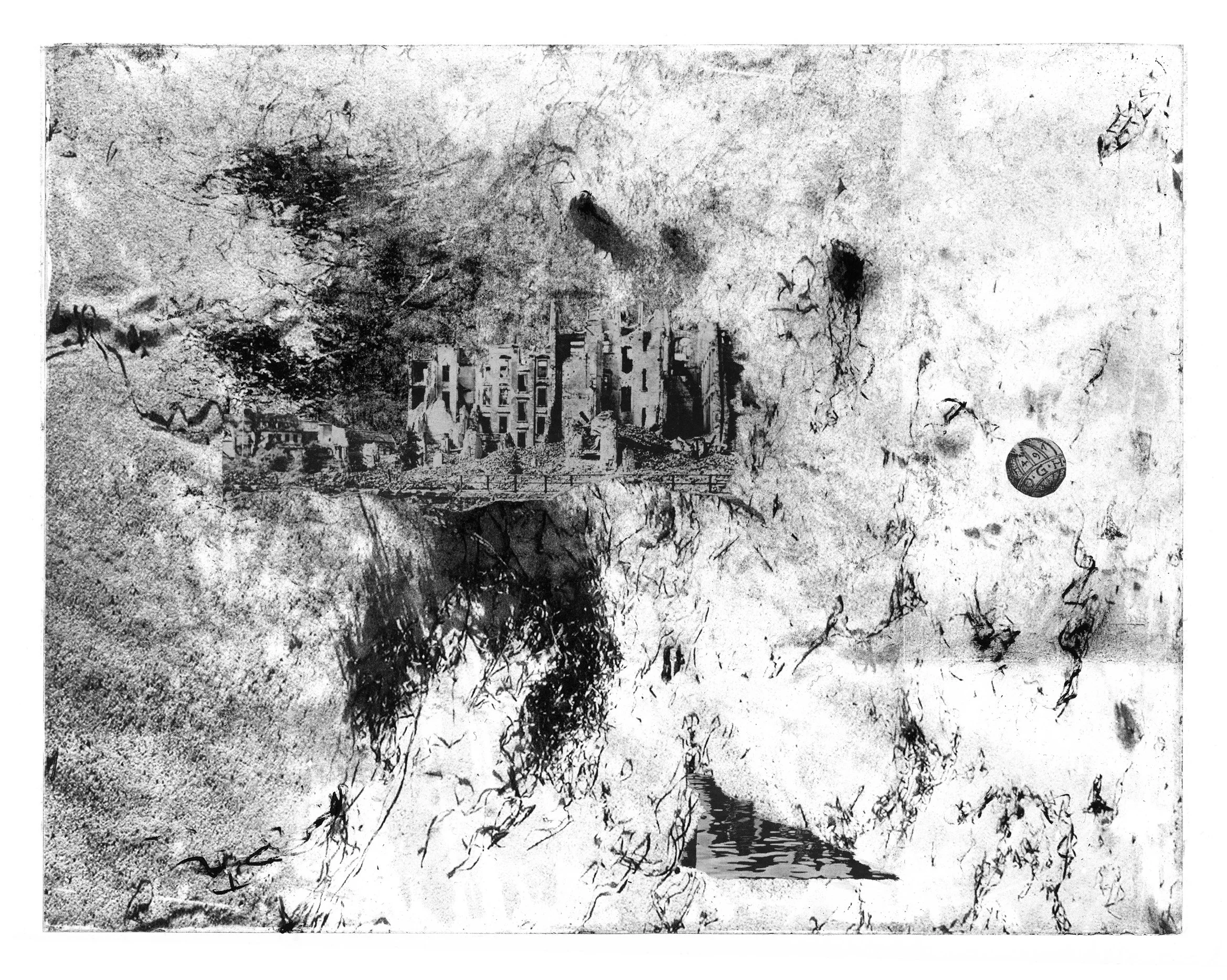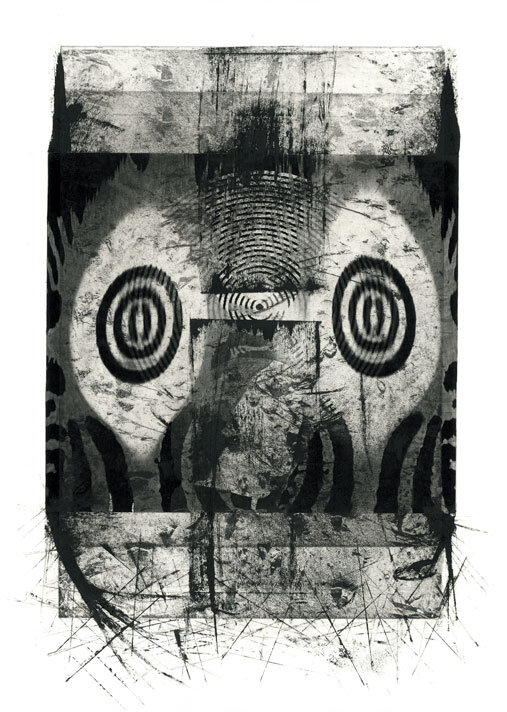Dutch literary magazine “Terras”
Four prints in black and white – Jurgita Gerlikaite
Jurgita Gerlikaite, Lithuanian visual fine artist, art historian and author, took interest in a variety of creative techniques, both in visual fine art and creative writing, from an early age. Inspired by the artwork of her grandmother, an esteemed painter and textile artist and father, professional portraitist, she chose to study a more intimate art form – printmaking.
Jurgita Gerlikaite’s City in a desert has the feeling of mirage to it – an entire city breaking free of the bone-dry soil. And there is a sphere in the frame, engraved “1491”. 1491 being the epoch of the young Albrecht Dürer (1471-1528).
A city in a desert. Non-toxic photogravure, collage. 38×45 cm. Private collection, USA.
And as in Sounds where we get the idea that we connect through sounds, share space and interact with each other by sharing sounds.
Sounds. Non-toxic photogravure.
As in A Star, where you find a child's face above the horizon, you can barely make out the eye, but it’s there indicating the loving connection between a mother and her child.
A Star. Non-toxic photogravure, collage.
“I like having a relatively small frame to work with and breaking out of it in a collage”, says Jurgita Gerlikaite.
And when you see the inspiration from Dürer’s engraving Die Vier Hexen (The Four Witches, 1497) in Witch Apparitions, the viewer gets the idea that Jurgita Gerlikaite has strong feelings for the work of the German painter, printmaker and theorist.
Witch apparitions. Non-toxic photogravure, collage.
Jurgita Gerlikaite’s four black and white images are non-toxic copper plate intaglio prints (photogravures), a technique she learned to master at Henrik Bøegh’s Grafisk Eksperimentarium in Copenhagen.
“A print is always a gift of surprise, due to the many variables”, says Jurgita Gerlikaite.
Her interest in the medium was notably drawn by the power of one of her teachers, Žibuntas Mikšys
(1923 - 2013), one of Lithuania's most important graphic artists in exile, who had an infectious love for the medium.
She delved into the tradition of printmaking in art history, and she gained an appreciation for the longevity and value of the art form.
And she found that the concentrated working method over the copper plate suited her perfectly, whether it's an etching or a dry point. She also developed a special feeling for the limited, graduated (black and white) tones at play.
To really get into Gerlikaite's work, you need to look closely at the small details and the stories she includes in her imagery, frequently characterized by a lyric undertone.
“My desire is to express subtle poetic ideas. To suggest and leave the rest to the imagination”, she says.
– Steffen Boesen



